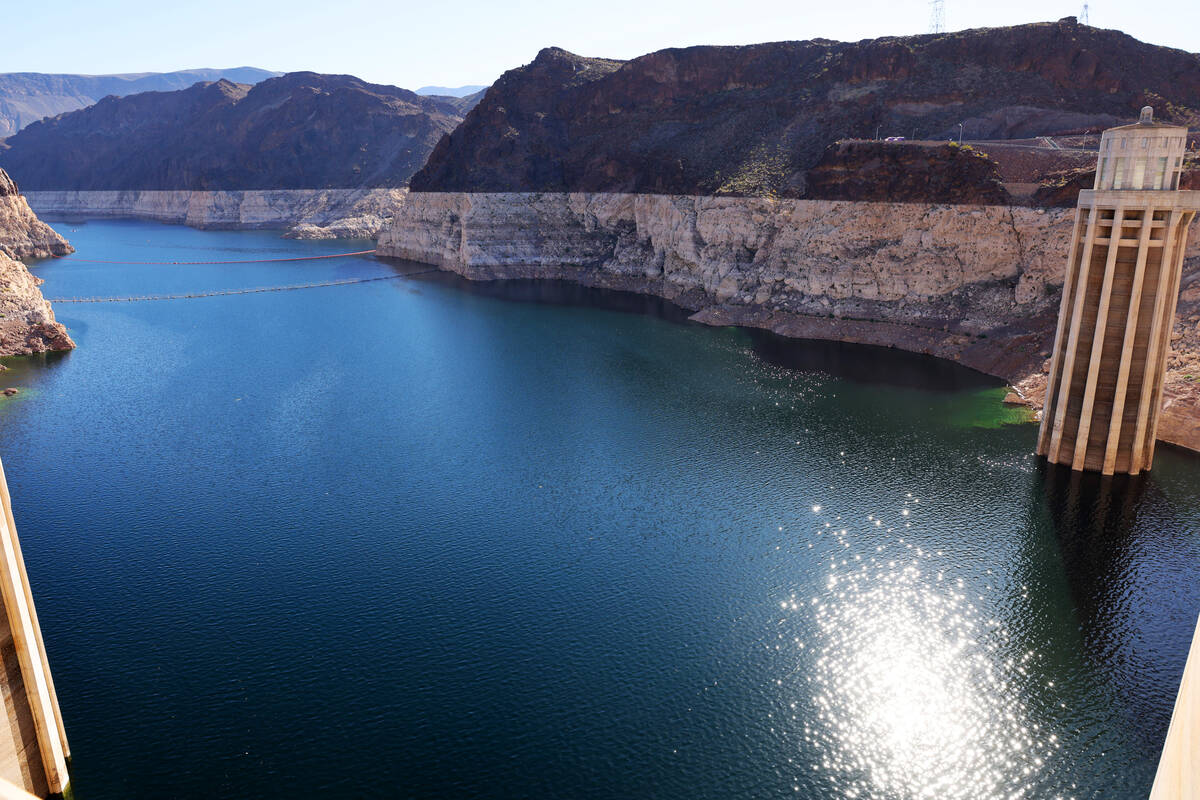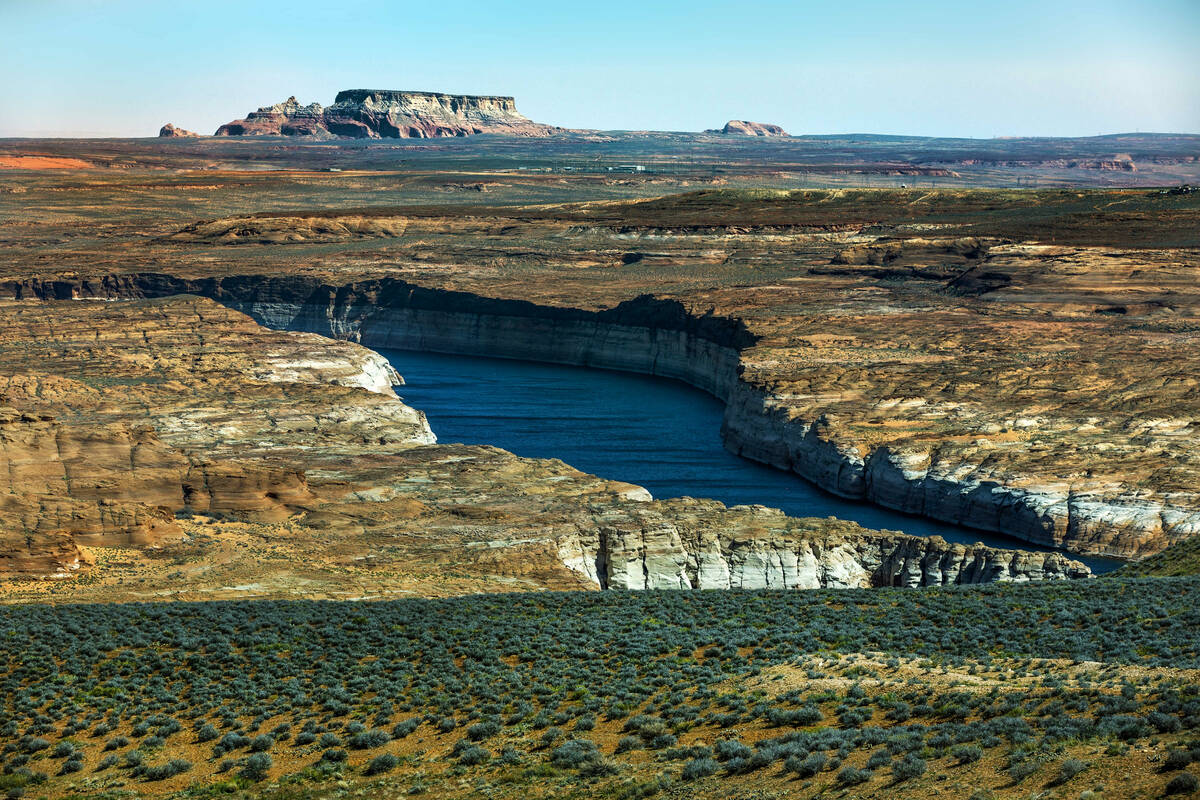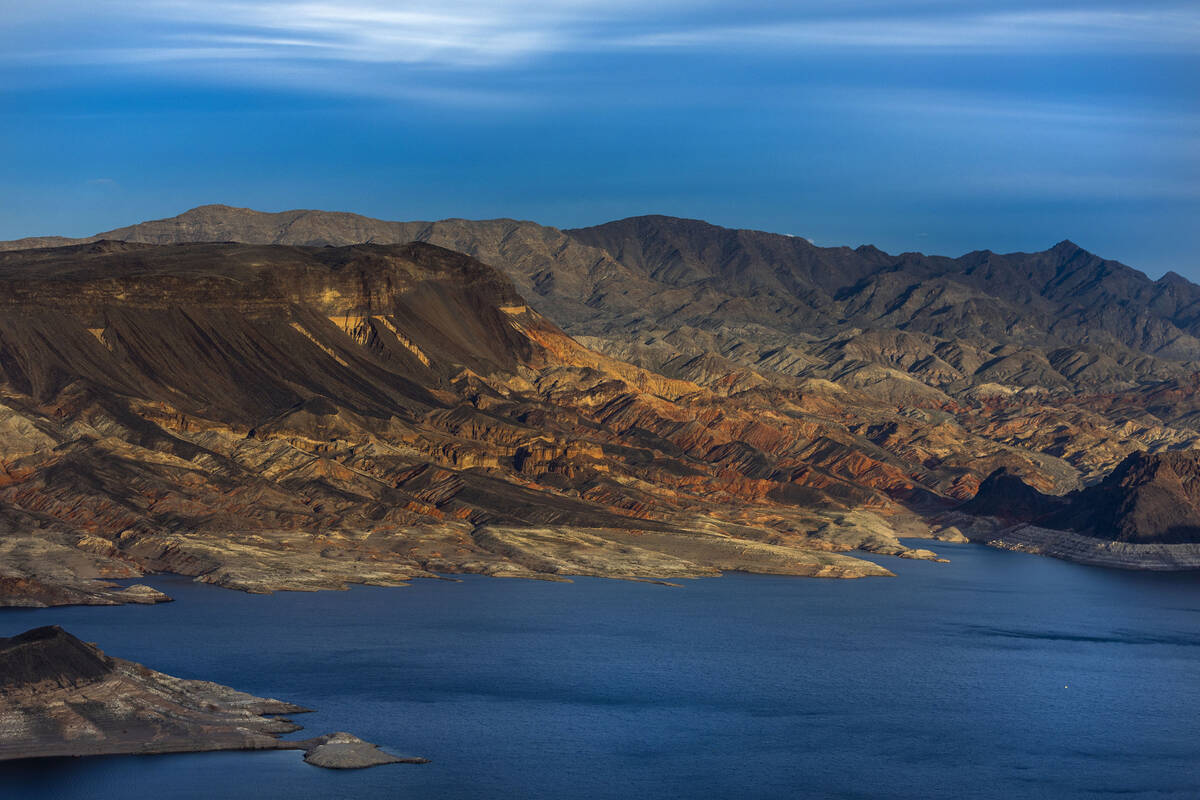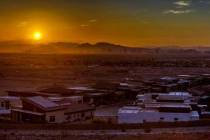Lake Mead’s water shortage continues, but cuts eased for 2024
Despite a wet winter that swelled the Colorado River’s reservoirs this year, Lake Mead will head into 2024 under a federal water shortage for a third consecutive year.
The rising water levels at Lake Mead and Lake Powell in recent months from that strong winter snowmelt, though, mean that cuts to Nevada, Arizona and Mexico in 2024 will be eased slightly from this year’s reductions.
The announcement is based on water level projections released Tuesday by the U.S. Bureau of Reclamation — a report that shows Lake Mead ending 2023 more than 20 feet higher than where the lake’s surface sat in early January.
The slight easing of the water cuts follows a winter season that brought a reprieve to the Colorado River, which provides water to 40 million people across seven states and Mexico. But experts believe the relief will only offer a temporary buffer for the river system that has been taxed by decades of chronic overuse by cities and farmers combined with decades of drought that have led to a significant drop in the river’s annual flows.
“The above-average precipitation this year was a welcome relief, and coupled with our hard work for system conservation, we have the time to focus on the long-term sustainability solutions needed in the Colorado River Basin. However, Lake Powell and Lake Mead – the two largest reservoirs in the United States and the two largest storage units in the Colorado River system – remain at historically low levels,” Reclamation Commissioner Camille Calimlim Touton said in a statement. “As we experience a warmer, drier west due to a prolonged drought, accelerated by climate change, Reclamation is committed to leading inclusive and transparent efforts to develop the next-generation framework for managing the river system.”
The federal government made its first-ever water shortage declaration for the Colorado River in 2021 that required sizable allocation cuts for Arizona, Nevada and Mexico for 2022, and those reductions grew the following year as Lake Mead hit historic lows.
Tuesday’s announcement will take the lower basin states and Mexico back to the same cuts announced in 2021, or a “Tier 1” shortage.
The cuts are determined through prior drought agreements between the seven Colorado River basin states and Mexico. Arizona has borne the brunt of those cuts under the agreements, while California has not been required to take any mandatory reductions to its 4.4 million-acre-foot allocation.
What it means for Nevada
The easing of the cuts means Nevada will have 279,000 acre-feet of water available from the river in 2024, or about 7 percent less than what the state normally receives. That’s 4,000 acre-feet more than the state’s allocation this year under the more aggressive shortage tier.
Under normal conditions Nevada receives 300,000 acre-feet of water from the Colorado River, which provides roughly 90 percent of the water for Southern Nevada. An acre-foot of water is enough to supply two to three homes for a year.
John Entsminger, general manager of the Southern Nevada Water Authority and Nevada’s lead negotiator on the Colorado River, said the continued shortage won’t make much difference for the Las Vegas Valley, thanks to the region’s success in conserving water over the last two decades.
Southern Nevada recycles nearly all of the water used indoors, which allows the state to receive return flow credits for each gallon of treated wastewater returned to Lake Mead and stretch its small share of the river.
The Las Vegas Valley also has been aggressive in water conservation measures over the last two decades, including incentivizing residents and businesses to tear out thirsty grass, banning the installation of new commercial evaporative coolers, and putting limits on the size of new pools.
Nevada in 2022 consumed just 223,000 acre-feet of water, and this year, the region is on pace to consume less than 200,000 acre-feet.
“As long as we keep hitting our conservation goals, these reductions aren’t going to impact our community,” Entsminger said.
Lake Mead levels still low
While the easing of the cuts will provide some relief to farmers and cities in the Southwest, the longer term outlook for Lake Mead and the Colorado River remains challenging.
This past winter raised Lake Mead’s level for the first time in years, but the reservoir east of Las Vegas still sat at just 33 percent full as of Monday, according to the Bureau of Reclamation’s latest data. The combined storage for Lake Mead and Lake Powell is currently just 36 percent.
“Climate change gives us very little breathing room to refill reservoirs,” said Kyle Roerink, executive director of Great Basin Water Network. “Look at the history. Elevations are basically back to where we were two years ago. What’s it going to take to bring us back to the brink? Not much. More pain is coming for plant life, wildlife and human life, and I have little faith that water managers will take the proper long-term course to mitigate the hardship.”
The three states that make up the lower Colorado River basin — Nevada, California and Arizona — announced an agreement in May to voluntarily reduce their collective use from the river by 3 million acre-feet through 2026, a plan fueled by $1.2 billion in funds from the federal government.
That plan, which is being evaluated by the federal government, would require California to cut its use by an average of 400,000 acre-feet a year, or about 9 percent of the state’s annual allocation.
Nevada, meanwhile, would commit to leaving 285,000 acre-feet of water in Lake Mead over the four-year period, starting with 75,000 acre-feet this year.
Tuesday also marked a key deadline for the public and agencies to submit comments as to how they believe the Colorado River and its reservoirs should be managed after 2026, when the current operating guidelines expire.
The most critical piece to those negotiations, Entsminger said, will be states agreeing on just how bad the future hydrologic conditions will be for the West’s most important river.
The original compact divided the river up among the states based on an assumed annual flow of 15 million acre-feet. But research has shown that the Colorado River’s average flows have fallen by roughly 20 percent since 2000, closer to 12 million acre-feet a year. And scientists predict that climate change will only shrink the river more in the future.
“If you’re going to act like a 12 or 13 million (acre-foot) annual is the worst-case scenario, and then it manifests itself as 10 or 11, then whatever human system you put in place will not be able to adapt to that,” Entsminger said.
Contact Colton Lochhead at clochhead@reviewjournal.com

























